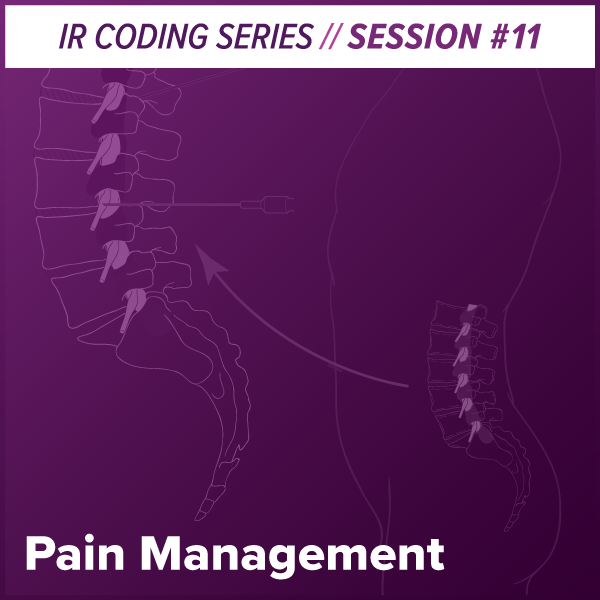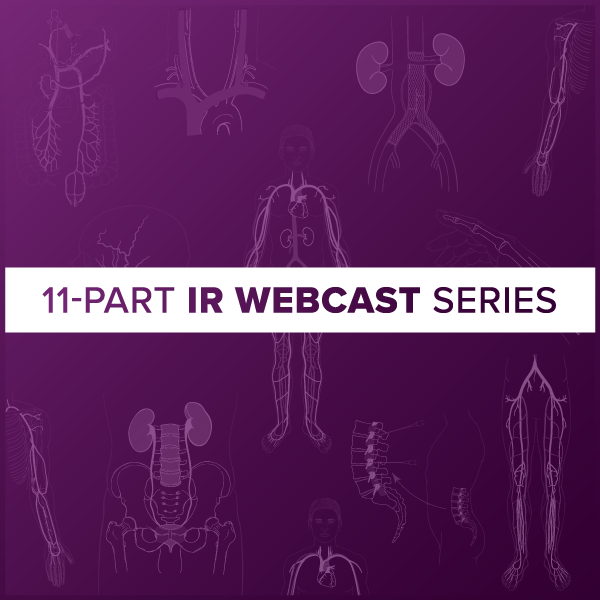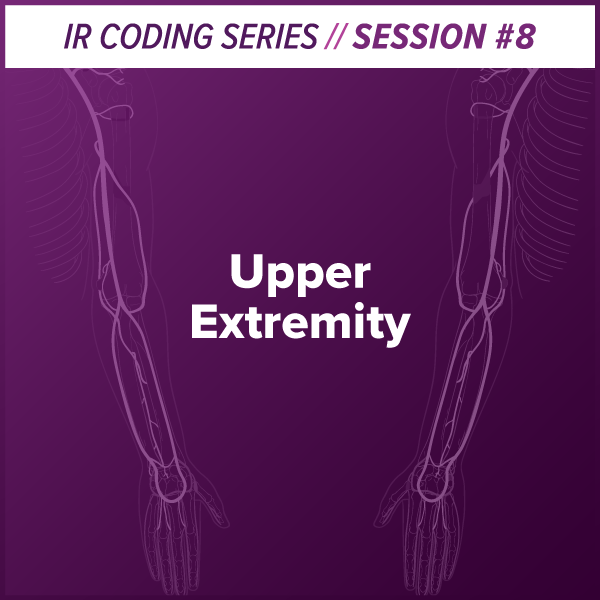Radiology Question for the Week of October 16, 2023
What is the difference between codes 55700 and 55706? They both describe
needle biopsy of the prostate, how do you determine which to use?
For guidance with your interventional radiology coding, why settle for anything less than the very best? There’s too much at stake! IR coding can be exceedingly difficult, with many areas of confusion: more bundling of IR CPT® codes, IR coding hierarchies for multiple diagnostic studies, MUEs/MAIs and more. It’s no wonder about 30% of IR cases are coded incorrectly, according to audits by our IR coding experts. This high error rate leads to a mammoth risk of underpayment or claim denials. Throughout the pandemic, radiology experienced a slash in service volumes making it even more critical to code compliantly.
The industry-leading resources from MedLearn Publishing are designed to boost your coding accuracy — and instill coding confidence — while protecting your facility from payment denials, auditor take-backs and penalties.
What is the difference between codes 55700 and 55706? They both describe
needle biopsy of the prostate, how do you determine which to use?
How would you code when a radiologist is asked to create a new access, or
enlarge an existing access, for a urologist to perform subsequent endourologic
procedures?
What happens when a physician converts an external drainage catheter to an internal-external drainage catheter. Is this an exchange? Is there a code that describes this?
Can extremity angiography codes 75710 and 75716 be assigned for selective and non-selective imaging?






Covering nonvascular catheter-based drainage procedures, this session will discuss the differences and nuances in code choices for thoracentesis, paracentesis, fluid-collections, indwelling catheters, needle-based procedures and sclerosing with guidance on when each code option is appropriate to use, what’s bundled and what’s inclusive and when multiple codes may be reported.

Covering pain management IR procedures, this session will discuss the differences and nuances in code choices for a wide range of procedures including vertebroplasty, kyphoplasty, sacroplasty, epidural steroid injections and blood patches, facet joint injections, neurolytic destruction and more; with guidance on when each code option is appropriate to use, documentation requirements and common areas of noncompliance. The 4 new 2023 C codes created by CMS for ASCs, why they were created and who should or should not use them, will also be discussed.

From IR coding fundamentals to complex scenarios and the dos and don’ts of bundled, hybrid-bundled and component coding, these webcasts will walk you through diagnostic and therapeutic procedures covering a full range of body systems–vascular and nonvascular.

Covering basic terminology, guidance, and vascular anatomy, this webcast walks through modifiers, CCI fundamentals, and bundled and component coding rules for diagnostic and therapeutic vascular IR services.

Covering the imaging and interventional procedures performed in the lower extremities, this session will discuss the differences and nuances in code choices for angiography, angioplasty, atherectomy, lithotripsy, infusion therapy and intravascular stenting (for both arterial and venous procedures) with guidance on when each code is appropriate to use, and how those code choices change based on how the procedure is performed.

Covering imaging and interventional procedures performed in the head and neck, this session will discuss the differences and nuances in code choices for angiography, embolization, angioplasty, thrombectomy, thrombolytic infusion therapy and intravascular stenting (for both arterial and venous procedures) with guidance on when each code is appropriate to use, and how those code choices can change based on how the procedure is performed.

Covering a full range of biliary and gastrointestinal procedures, this in-depth session breaks down diagnostic and therapeutic services–detailing the procedures and the CPT® codes that go with them while offering in-depth insights, guidance, and instruction so you can come away confident when coding for these complex, and often error prone, services.

Explore the complete spectrum of genitourinary procedures in this comprehensive session. Delve into both diagnostic and therapeutic procedures as we dissect the intricacies of each, providing a thorough understanding of the associated CPT® codes. Gain profound insights, receive expert guidance, and benefit from detailed instruction to enhance your confidence in coding for these intricate and frequently error-prone services.

Covering imaging and interventional procedures performed in the upper extremities, this session will discuss the differences and nuances in code choices for angiography, angioplasty, atherectomy, embolization, infusion therapy and intravascular stenting (for both arterial and venous procedures) with guidance on when each code is appropriate to use, and how those code choices can change based on how the procedure is performed.

Covering venous imaging and interventional procedures, this session will discuss the differences and nuances in code choices with guidance on when each code is appropriate to use, how those code choices can change based on how the procedure is performed and examples explaining which codes are appropriate in different scenarios.

Focusing on diagnostic imaging and interventional abdominal/visceral procedures, this session will discuss the nuances in code choices for a full range of services, including visceral component coding, aortic endograft procedures, with guidance on when each code is appropriate to use, and how those code choices can change based on how the procedure is performed.

Covering pain management IR procedures, this session will discuss the differences and nuances in code choices for a wide range of procedures including vertebroplasty, kyphoplasty, sacroplasty, epidural steroid injections and blood patches, facet joint injections, neurolytic destruction and more; with guidance on when each code option is appropriate to use, documentation requirements and common areas of noncompliance. The 4 new 2023 C codes created by CMS for ASCs, why they were created and who should or should not use them, will also be discussed.

MedLearn Publishing IR resources help coders “connect the dots” between clinical practice and correct code assignments, according to industry experts.
Happy World Health Day! Our exclusive webcast, ‘2024 SDoH Update: Navigating Coding and Screening Assessment,’ is just $99 for a limited time! Use code WorldHealth24 at checkout.